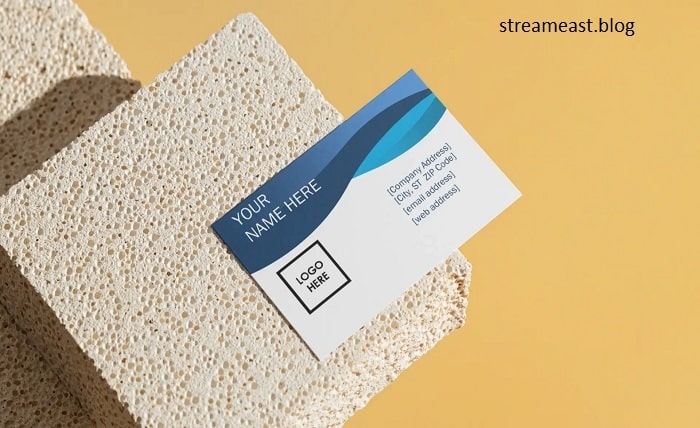The Enduring Significance of Business Cards
In an era dominated by digital communication, one might question the relevance of the humble business card. However, despite the rise of virtual networking platforms and social media, business cards continue to hold a special place in the realm of professional interaction. They serve as tangible representations of one’s brand and facilitate face-to-face connections that digital exchanges often lack. In this guide, we delve into the importance of business cards and offer insights into maximizing their impact in the modern business landscape.
1. Evolution of Business Cards: From Tradition to Innovation
The history of business cards dates back centuries, evolving from simple calling cards to sophisticated branding tools. Initially used as a means of introduction and social etiquette, business cards have transformed into dynamic marketing assets. Today, they reflect not only contact information but also a company’s values, aesthetics, and brand identity. Understanding this evolution helps in appreciating the significance of business cards in contemporary networking.
2. Designing Effective Business Cards: Elements and Best Practices
The design of a business card plays a pivotal role in capturing attention and conveying professionalism. From choosing the right color palette to selecting suitable fonts and layouts, every element contributes to the overall impact. Incorporating logos, taglines, and visual elements that align with your brand identity can leave a lasting impression on recipients. Furthermore, considering the tactile experience and quality of materials enhances the perceived value of the card.
3. Utilizing Business Cards in the Digital Age: Integration and Innovation
While digital platforms offer unparalleled reach and convenience, integrating traditional methods like business cards with online strategies can yield powerful results. QR codes, NFC technology, and augmented reality are revolutionizing how business cards are utilized, providing interactive experiences and seamless digital connections. Leveraging social media handles and website URLs on cards encourages recipients to explore online profiles, fostering deeper engagement beyond the initial exchange.
4. Etiquette and Networking: Making Meaningful Connections
The exchange of business cards is not merely a transactional gesture but an opportunity to initiate meaningful connections. Observing proper etiquette, such as presenting and receiving cards with respect, demonstrates professionalism and cultural awareness. Following up with a personalized message or email reinforces the connection and sets the stage for future collaboration or communication. Building relationships beyond the confines of the card enhances networking effectiveness and establishes a solid foundation for professional growth.
5. Measuring Success: Tracking ROI and Engagement
Incorporating business cards into your marketing strategy warrants tracking and evaluating their effectiveness. Monitoring metrics such as response rates, conversion rates, and referrals provides insights into the impact of your card designs and distribution methods. Additionally, soliciting feedback from recipients enables continuous improvement and refinement of your card designs and messaging. By assessing ROI and engagement metrics, you can optimize your investment in business cards and maximize their contribution to your business objectives.
6. Sustainability and Eco-Friendly Practices: Balancing Impact and Responsibility
As environmental consciousness grows, so does the emphasis on sustainable business practices, including the production and disposal of business cards. Opting for eco-friendly materials, such as recycled paper or biodegradable alternatives, reduces the ecological footprint associated with card manufacturing. Moreover, adopting digital alternatives, such as virtual business cards or mobile apps, minimizes paper waste while maintaining networking efficiency. Embracing sustainability aligns with corporate social responsibility initiatives and demonstrates a commitment to environmental stewardship.
Conclusion:
while digital communication continues to reshape how we connect and conduct business, the significance of business cards remains undeniable. They serve as tangible representations of our professional identity and facilitate authentic interactions in an increasingly virtual landscape. By embracing innovation in design and integration with digital platforms, business cards evolve alongside contemporary networking practices. As we navigate the dynamic intersection of tradition and technology, harnessing the power of business cards empowers us to forge meaningful connections and leave a lasting impression in the competitive realm of business.
FAQ
Q: Are business cards still relevant in the digital age?
A: Absolutely. Despite advances in digital networking, business cards remain essential for facilitating face-to-face connections and leaving a tangible impression on potential clients or collaborators.
Q: What should I include on my business card?
A: Your business card should include essential contact information such as your name, job title, company name, phone number, email address, and website. Additionally, you can incorporate branding elements like logos, taglines, and visual motifs to reinforce your brand identity.
Q: How can I make my business cards stand out?
A: To make your business cards stand out, focus on innovative design elements, quality materials, and unique finishing options. Incorporating memorable visuals, unconventional shapes, or interactive features can help your cards leave a lasting impression on recipients.
Q: What role does etiquette play in exchanging business cards?
A: Observing proper etiquette when exchanging business cards demonstrates professionalism and respect for cultural norms. Present and receive cards with both hands, take a moment to review the card you receive, and express appreciation for the exchange.
Q: How can I measure the effectiveness of my business cards?
A: You can measure the effectiveness of your business cards by tracking metrics such as response rates, conversion rates, and referrals. Additionally, solicit feedback from recipients to gain insights into the impact of your card designs and messaging.
